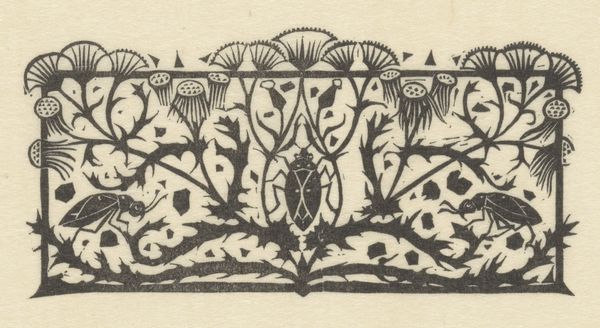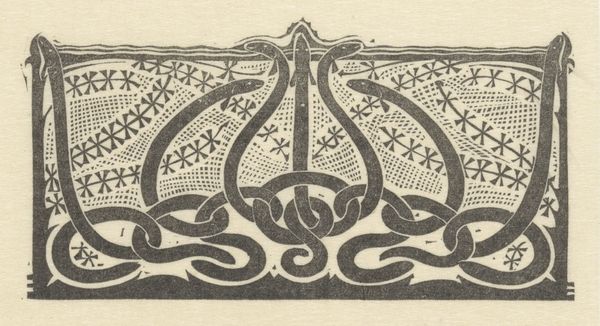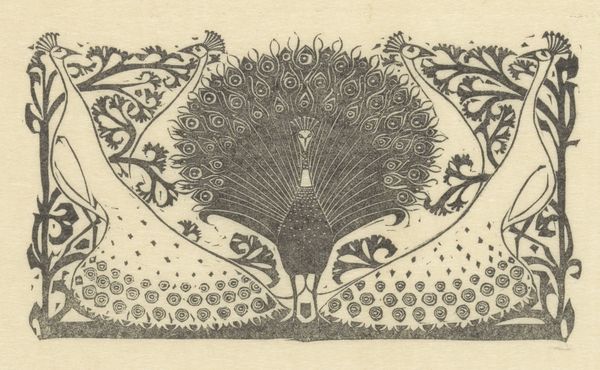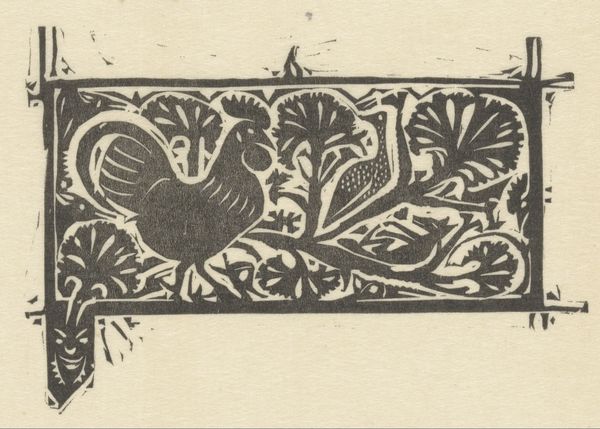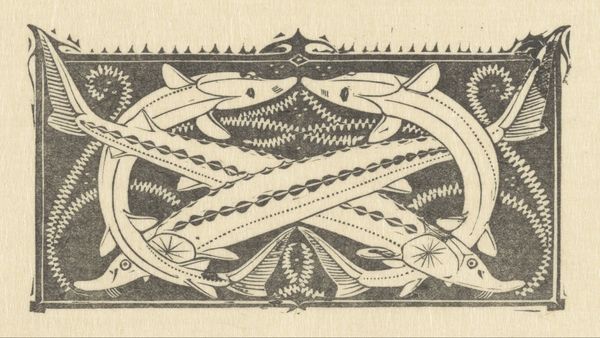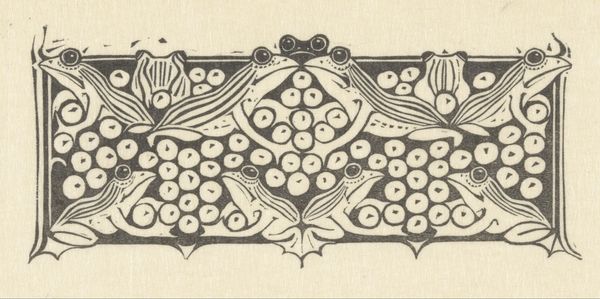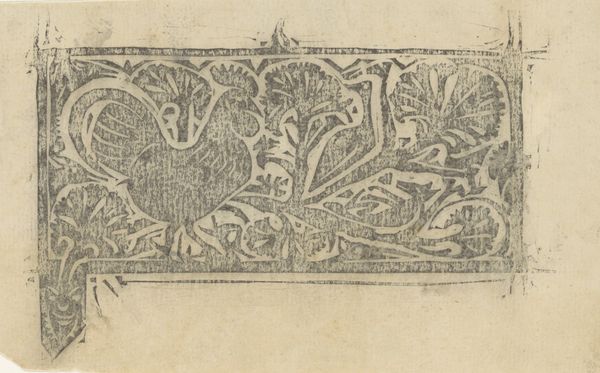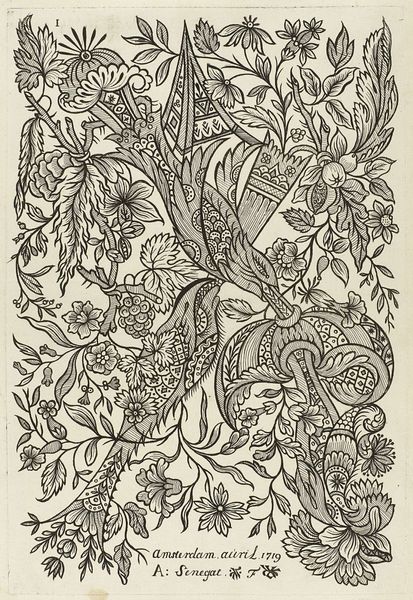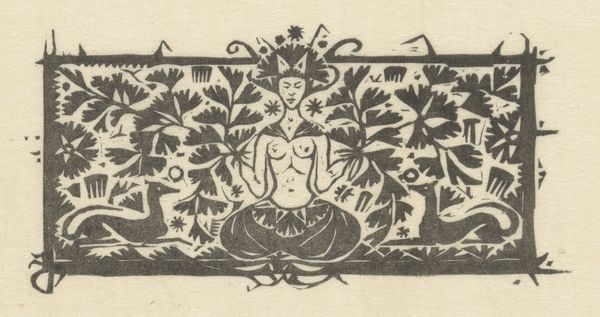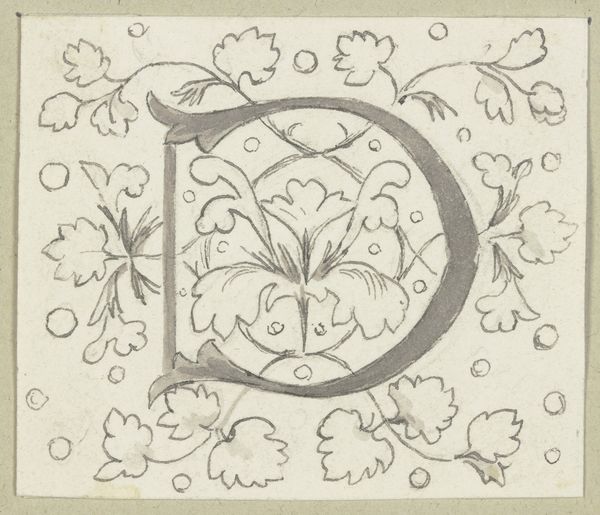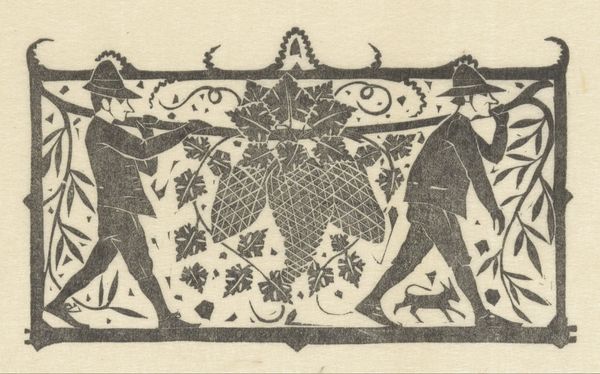
Kopvignet met zeepaardjes in 'Kunst en samenleving' 1893 - 1927
0:00
0:00
gerritwillemdijsselhof
Rijksmuseum
print, woodcut
#
comic strip sketch
#
art-nouveau
#
pen drawing
# print
#
pen illustration
#
pen sketch
#
ink line art
#
linework heavy
#
pen-ink sketch
#
woodcut
#
pen work
#
sketchbook drawing
#
doodle art
Dimensions: height 60 mm, width 120 mm
Copyright: Rijks Museum: Open Domain
Editor: This is 'Kopvignet met zeepaardjes in 'Kunst en samenleving,'' by Gerrit Willem Dijsselhof, made sometime between 1893 and 1927. It's a woodcut print, and I'm immediately drawn to the bold linework and how it feels almost like textile design. What do you see in this piece? Curator: I see a fascinating example of the application of labor and craft in the service of disseminating ideas. The print, produced via the process of woodcutting, becomes a multiple, designed for consumption within a broader context of "Kunst en Samenleving" – Art and Society. Consider the material limitations – the artist had to meticulously carve away material, a very physical process. Editor: So you're saying the choice of woodcut, the actual making of it, is key to understanding the artwork? Curator: Exactly! It’s about more than just aesthetics. The material itself, and the process of carving it, are vital. What does the relatively accessible nature of printmaking imply about the intended audience and its relation to consumption? What sort of access did the laboring classes have to art and art theory during the early twentieth century? Editor: I see your point. Because it is a print, and not unique, it implies this image was supposed to be accessible to a broad audience. That relates directly to its place in "Art and Society." And that labour that went into that physical carving, that makes you really think about the connection to industry and labour at the time. Curator: Precisely! This artwork encourages us to examine the interplay between artistic creation, the means of production, and its circulation within the socio-economic fabric of the time. Editor: That makes me look at the artwork completely differently. Now it is less of just an image but rather as a document that carries ideas across different levels of society! Curator: Indeed. Considering the materiality can open up richer and broader meanings than one might initially think.
Comments
No comments
Be the first to comment and join the conversation on the ultimate creative platform.
